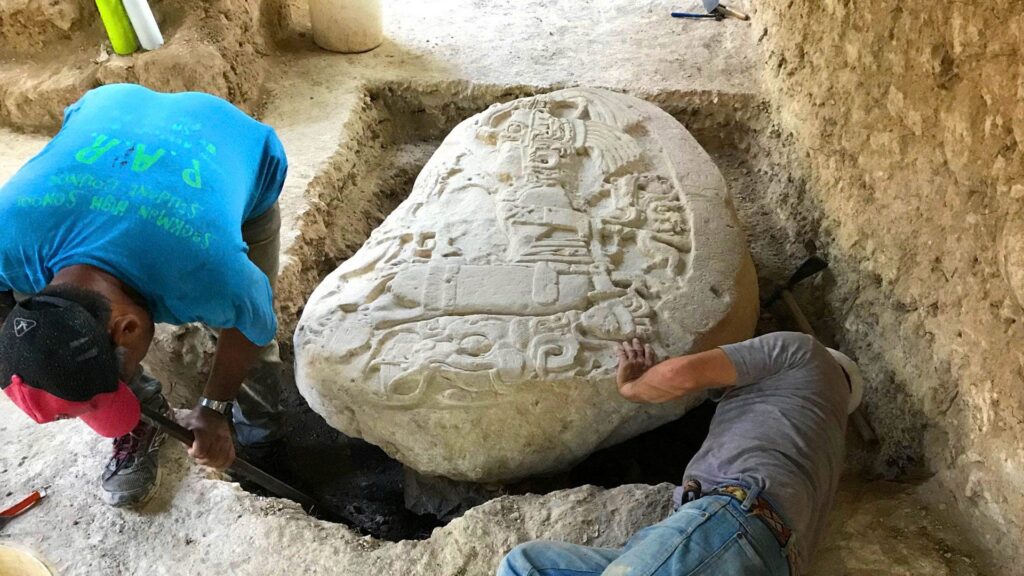Serpent Kingdom’s Power Play Revealed in Guatemalan Jungle

In the dense jungles of northern Guatemala, archaeologists have unearthed a remarkable limestone altar that offers a glimpse into the political machinations of the ancient Mayan civilization. This 1,500-year-old relic, discovered at the La Corona archaeological site, tells a tale of power, alliances, and conquest that rivals the drama of modern TV series like “Game of Thrones.”
A Royal Discovery

The massive altar, weighing about one ton, features an intricately carved image of King Chak Took Ich’aak of La Corona. The king is depicted seated and holding a scepter, with two patron gods of the city emerging from it. Hieroglyphic inscriptions on the altar date it to May 12, 544, providing a precise historical context for this remarkable find.
The Serpent Kingdom’s Strategic Alliances

The altar’s inscriptions reveal that the Kaanul dynasty, known as the Serpent Kingdom, employed sophisticated political strategies to expand their influence. Much like the noble houses in “Game of Thrones,” the Serpent Kingdom formed strategic alliances with smaller cities to encircle and ultimately defeat their main rival, Tikal.
A Mayan Princess and a Political Marriage
One of the most intriguing aspects of the altar’s story is the revelation of a marriage alliance between a princess from the Serpent Kingdom and a king of La Corona. This union exemplifies the complex web of relationships that the Kaanul dynasty used to consolidate power across the Mayan lowlands.
Rise and Fall of an Empire

The Serpent Kingdom’s influence extended from their capital Dzibanche to encompass large parts of present-day Guatemala, Belize, and Mexico. However, like many great powers in history, their dominance was not eternal. The altar’s discovery helps piece together the story of the Kaanul dynasty’s eventual defeat by Tikal, highlighting the cyclical nature of power in ancient civilizations.
Challenges in Uncovering Ancient Secrets
While the altar provides invaluable insights into Mayan history, archaeologists face significant challenges in their work at La Corona. The remote location within the Mayan Biosphere Reserve is threatened by looting, criminal activity, and illegal land use. Despite these obstacles, researchers continue their efforts to uncover and preserve the rich archaeological heritage of the region.

As excavations continue, each new discovery like this altar helps to paint a more vivid picture of the complex and sophisticated world of the ancient Maya. The political intrigue, strategic alliances, and power struggles revealed by this 1,500-year-old artifact remind us that the thirst for power and influence is a timeless aspect of human civilization.

